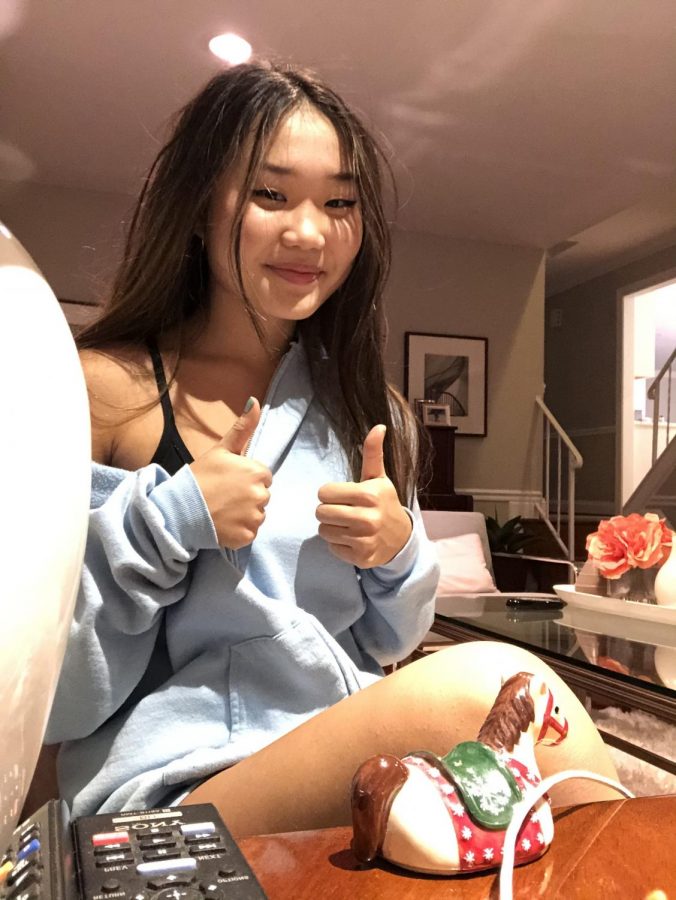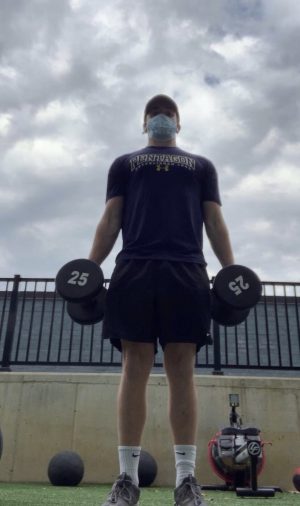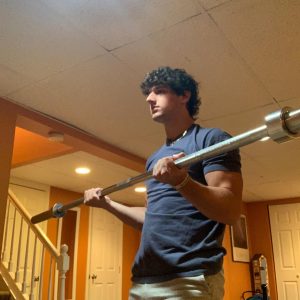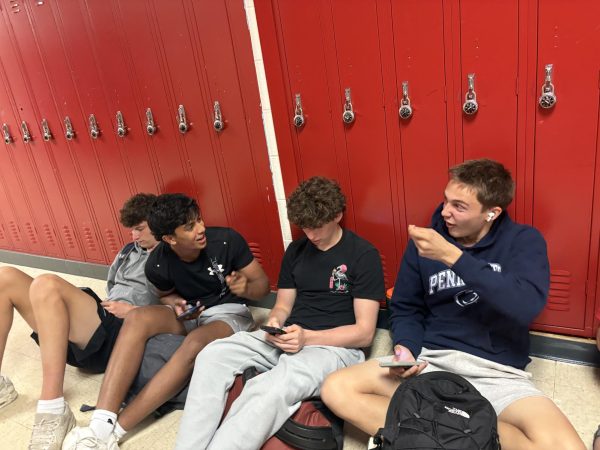Quarantine exercise craze has positive impact on mental health
Junior Olivia Kim congratulates herself after working out, due to the quarantine exercise craze.
It’s Mar. 13, and school has just announced a two-week break. At first, students rejoice, but soon it becomes apparent that they need to find a hobby to fill their newly acquired free time—the answer: exercise.
Will going on lengthy jogs every day be beneficial in the long run? Being forced to stay at home because of the pandemic has given people the opportunity and time to better themselves. Workout challenges and fitness accounts swept the nation, inspiring thousands of students to work on their physical health.
However, nine months later, it is important to take a step back to see if this exercise craze truly helped or if the intense pressure of social media is too much for the mental health of teenagers. With gyms closed and sports canceled, students resorted to other methods of exercise. Teens found themselves going on runs, bike rides, or following along to fitness videos from home. ”When quarantine started and I didn’t have soccer anymore and dance was from my house, I started running cross country and track and doing other independent workouts to stay active and replace the group workouts I was doing before,” freshman Lily King said.
The quarantine exercise craze began with the “Get Abs in 2 Weeks” challenge created by fitness YouTuber Chloe Ting. Creators endorsed this challenge on Tiktok and other social media platforms, and it quickly began to spread like wildfire as teenagers joined this two-week routine. “I participated in hopes to see the rumored fast-yet-effective results of getting abs in just two weeks,” sophomore Lauren Povich said.
Though it started off adored by thousands, the challenge quickly began to receive a great deal of negative feedback. “At first I liked it because it gave me something to do in quarantine, but sometimes the exercises were a little repetitive and it could take more than an hour to complete, so I don’t think I could do it now. I also didn’t see that much of a result,” junior Olivia Kim said.
Fitness accounts also gained popularity over the quarantine break. Inspired by influencers’ accounts, numerous students started their own social media profiles focused on exercise and balanced eating, hoping to share their health journey with their friends and followers. “The key to finding the right fitness accounts to follow is finding realistic ones. Don’t just follow an account because the person running it looks pretty and skinny. I like to follow the ones that also promote rest days as well as self-care,” Povich said.
This influx of fitness accounts, both by classmates and celebrities, has led to mixed feelings among students. “Mostly, the accounts help. My friends or other people who have accounts provide inspiration, healthy meal ideas, and new and fun workouts.” King said.
On the other hand, people argue that these accounts promote the impulsive need to compare themselves to others.“Instagram perpetrates really unrealistic body standards. It pushes for girls to have flat stomachs even though for women, it’s biologically really hard to do that,” Kim said.
Exercise plays a different role in every student’s life, and this quarantine break provided a chance for everyone to explore what’s right for their body specifically. Povich shared a bit of advice: “A recommendation I have about balancing exercise is that it’s all in moderation. Rest days are not bad days and there is no such thing as good or bad foods. You have to do what is right for you.”
Your donation will support the student journalists of Thomas S. Wootton High School. Your contribution will allow us to purchase equipment and cover our annual website hosting costs.
Mandy is a 2023 graduate.










